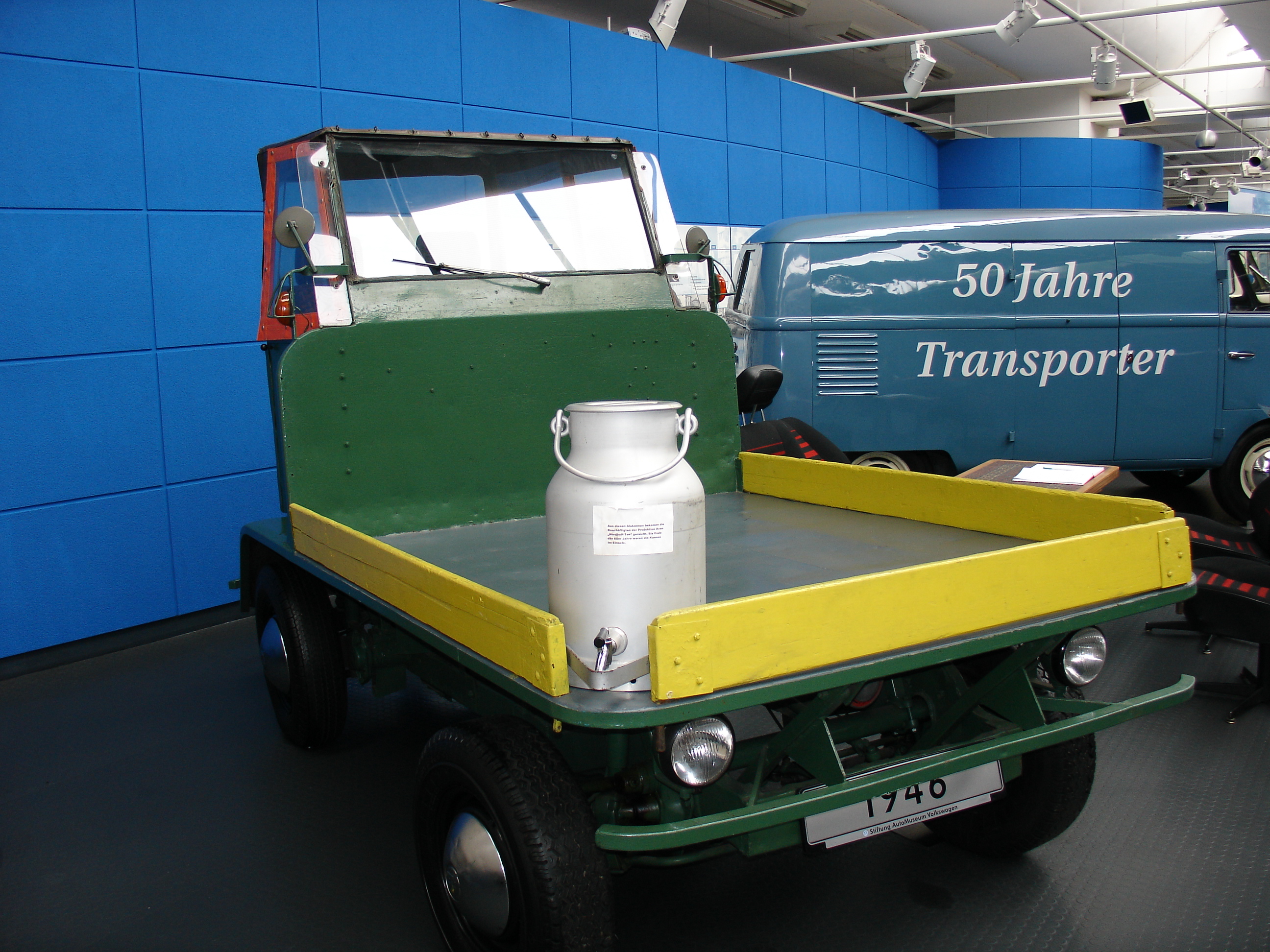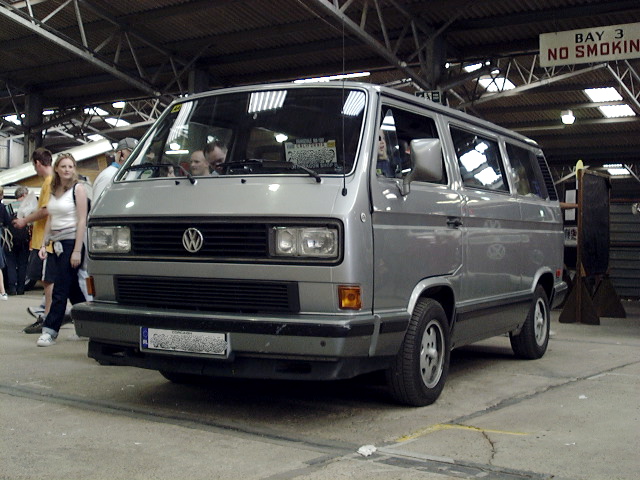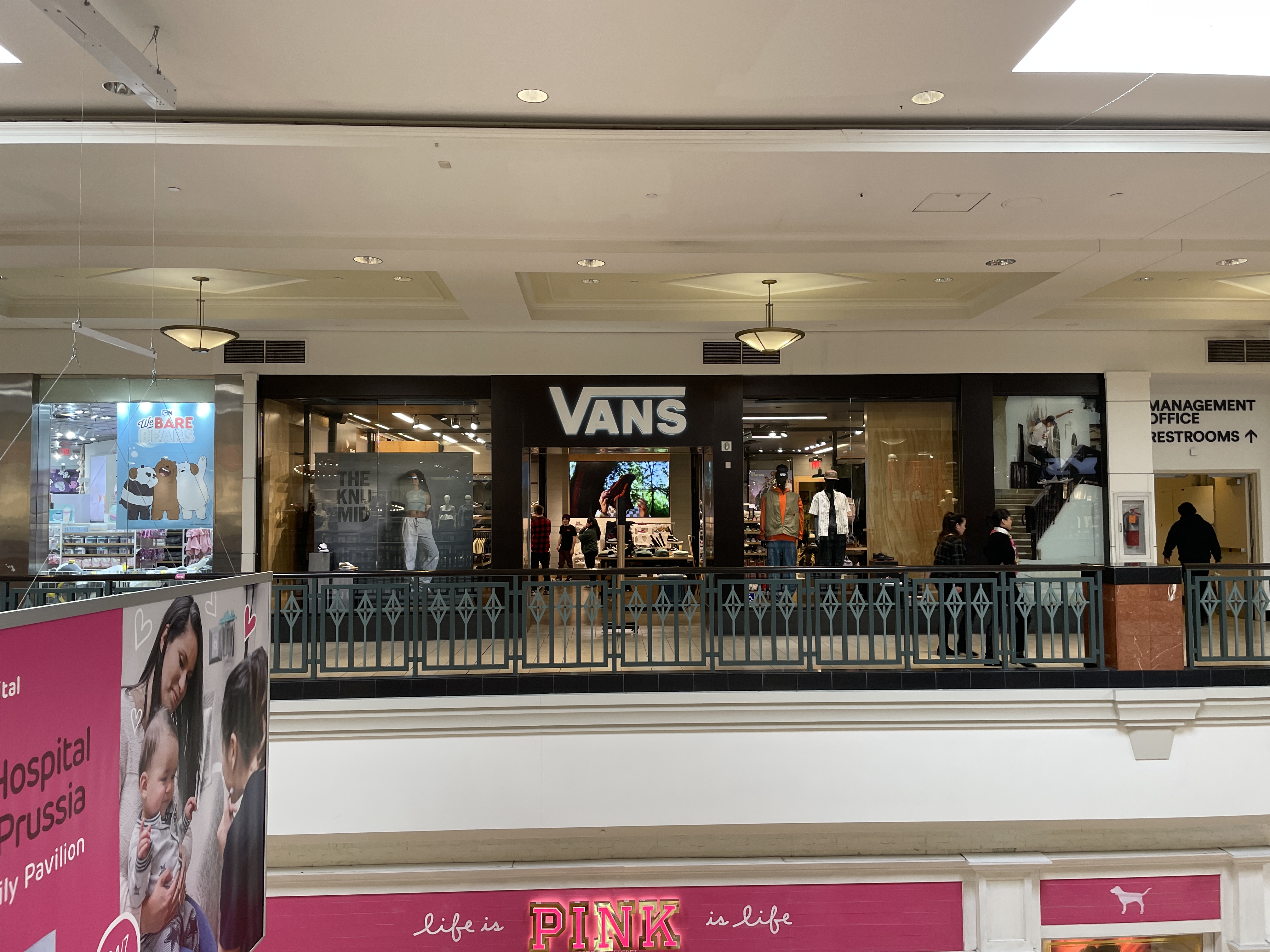|
Volkswagen Caravelle (other)
Volkswagen Caravelle is the nameplate of a van based on the Volkswagen Transporter. For information about the Caravelle, refer to the regular Transporter articles: *Volkswagen Type 2 (1950–1979), the Caravelle version has a more comfortable interior reminiscent of passenger cars. *Volkswagen Type 2 (T3) (1979–1992), the Caravelle was a version in Europe and Australia. *Volkswagen Transporter (T4) (1992–2003), the Caravelle version was in Europe only and featured windows all-round. * Volkswagen Transporter (T5) (2003–2015), the Caravelle version is sold in European left-hand drive markets and in Australia. In the UK, the T5 Caravelle is the same as the Multivan in other European markets. * Volkswagen Transporter (T6) (2015–2024), the Caravelle version is sold in European left-hand drive markets and in Australia. * Volkswagen Transporter (T7) (2024–present) File:Volk bus 1968a.jpg, Volkswagen Type 2 File:1984-1986 Volkswagen Caravelle (253) CL van (2015-12-07) 01.jpg, Vol ... [...More Info...] [...Related Items...] OR: [Wikipedia] [Google] [Baidu] |
Nameplate
A nameplate identifies and displays a person or product's name. Nameplates are usually shaped as rectangles but are also seen in other shapes, sometimes taking on the shape of someone's written name. Nameplates primarily serve an informative function (as in an office environment, where nameplates mounted on doors or walls identify employees' spaces) or a commercial role (as in a retail environment, where nameplates are mounted on products to identify the brand). Whereas name tags tend to be worn on uniforms or clothing, nameplates tend to be mounted onto an object (e.g. cars, amplification devices) or physical space (e.g. doors, walls, or desktops). Nameplates are also distinct from name plaques. Plaques have larger dimensions and aim to communicate more information than a name and title. Office nameplates Office nameplates generally are made out of plastic, wood, metals (stainless steel, brass, aluminium, zinc, copper) and usually contain one or two lines of text. ... [...More Info...] [...Related Items...] OR: [Wikipedia] [Google] [Baidu] |
Volkswagen Transporter
The Volkswagen Transporter, based on the Volkswagen Group's T platform, now in its seventh generation, refers to a series of vans produced for over 70 years and marketed worldwide. The T series is now considered an official list of Volkswagen Group platforms, Volkswagen Group automotive platform. and generations are sequentially named T1, T2, T3, T4, T5, T6 and T7. Pre-dating the ''T platform'' designations, the first three generations were named Volkswagen Type 2, Type 2, indicating their relative position to the Volkswagen Beetle, Type 1, or Beetle. As part of the ''T platform'', the first three generations are retroactively named T1, T2 and T3. The Transporter is the best-selling van in history with over 12 million units sold worldwide, and it comprises a gamut of variants including vans, minivans / minibuses, campervans, and chassis cab and pickup trucks. Competitors include the Ford Transit, Toyota HiAce and Mercedes-Benz Vito. __TOC__ Type 2 T1 (1950) Initially d ... [...More Info...] [...Related Items...] OR: [Wikipedia] [Google] [Baidu] |
Volkswagen Type 2
The Volkswagen Transporter, initially the Type 2, is a range of light commercial vehicles, built as vans, pickups, and cab-and-chassis variants, introduced in 1950 by the German automotive industry, automaker Volkswagen as their second mass-production car model, light motor vehicle series, and inspired by an idea and request from then-Netherlands-VW-importer Ben Pon Sr., Ben Pon. Known officially (depending on body type) as the Transporter, Kombi or Microbusor informally as the Volkswagen Station Wagon (US), Bus (also US), Camper (UK) or Bulli (Germany), it was initially given the factory designation 'Type 2', as it followedand was for decades based onthe Volkswagen Beetle, original 'Volkswagen' ("People's Car"), which became the VW factory's 'Type 1' after the World War Two, post-war reboot, and mostly known, in many languages, as the "Beetle". The Volkswagen Transporter has been built in many variants. It may be best known for its panel vans, but it was also b ... [...More Info...] [...Related Items...] OR: [Wikipedia] [Google] [Baidu] |
Volkswagen Type 2 (T3)
The Volkswagen Type 2 (T3) is the third generation of the Volkswagen Transporter. It was marketed under various nameplates worldwide – including the Transporter or Caravelle in Europe and Australia, Type 25 (T25) in the UK, Microbus and Kombi in South Africa, Kampeerauto in Netherlands, Combi in France and Vanagon in North and South America. It was larger, heavier, and more angular in its styling than its T2 predecessor, but shared the same rear-engine, cab-over design. It was produced in a rear wheel drive version as well as a 4WD version marketed as "Syncro." The T3 was manufactured in Hannover, Germany from 1979 until 1991. Production of the Syncro continued until 1992 at Puch in Graz, Austria, where all 4WDs were built. A limited number of 2WD models were also produced at the Graz factory after German production had ended. South African production of the T3 continued, for that market only, until 2002. The T3 was the final generation of rear-engined Volkswagens. His ... [...More Info...] [...Related Items...] OR: [Wikipedia] [Google] [Baidu] |
Volkswagen Transporter (T4)
The Volkswagen Transporter (T4), marketed in North America as the Volkswagen EuroVan, is a van produced by the Germany, German manufacturer Volkswagen Commercial Vehicles between 1990 and 2004, succeeding the Volkswagen Type 2 (T3) and superseded by the Volkswagen Transporter (T5). History Introduced in 1990, the T4 was the first Volkswagen van to have a front-mounted, water-cooled engine. Prompted by the success of similar moves with their passenger cars, Volkswagen had toyed with the idea of replacing their air-cooled, rear-engined Volkswagen Type 2, T2 vans with a front-engined, water cooling, water-cooled design in the late 1970s. The reasons for deciding in 1980 to instead introduce a new rear-engined Volkswagen Type 2 (T3), T3 are unclear. Thus, the introduction of a front-engined layout was delayed until the arrival of the T4. After a run of nearly 14 years, T4 production ceased in 2003, making it second only to the T1 for length of production in its home market. Chassis ... [...More Info...] [...Related Items...] OR: [Wikipedia] [Google] [Baidu] |
Volkswagen Transporter (T5)
The Volkswagen Transporter T5 range is the fifth generation of Volkswagen Commercial Vehicles (VWCV/VWN) Volkswagen Transporter, 'Transporter' series of medium-sized light commercial vehicles and the people mover Caravelle/Multivan range. It was launched 6 October 2002, and went into full production on 25 April 2003, replacing the fourth generation Volkswagen Transporter (T4), T4 Transporter range. Key markets for the T5 range are Germany, the United Kingdom, Taiwan, Russia, France, Turkey and Singapore. The T5 range was not sold in the United States and Canada due to poor sales of the T4-based Volkswagen Transporter (T4), Volkswagen EuroVan. In lieu of the T5, Volkswagen marketed the Canadian-built Volkswagen Routan, Routan, a minivan derived from the Chrysler RT platform. Overview The Transporter is the commercial workhorse in the T5 range, available in over 100 combinations. Variants include short- (SWB), or long-wheelbases (LWB); along with low-, medium-, or high-rooflines ... [...More Info...] [...Related Items...] OR: [Wikipedia] [Google] [Baidu] |
Volkswagen Transporter (T6)
The Volkswagen Transporter T6 is the sixth generation of the Volkswagen Transporter vans. It is the successor to the Volkswagen Transporter (T5), T5 Transporter. The Transporter line is the mid-size van offered by Volkswagen Commercial Vehicles, between the larger Volkswagen Crafter, Crafter and smaller Volkswagen Caddy, Caddy. Overview Still based on the T5's 7H / 7J platform, the T6 came with a wide range of revisions and updates, including a completely new dashboard layout (in two versions, standard and 'comfort'). The front end ahead of the windscreen was all new along with cosmetic revisions to the tailgate / rear doors and rear lights. New options for the T6 included LED headlights, LED rear lights and a range of driver assistance and multimedia options. Transporter T6.1 Volkswagen unveiled the updated T6.1 version of the T6 at the Geneva Motor Show in March 2019. Essentially a mid-cycle refresh, the main updates were electric power steering, which allows for the imp ... [...More Info...] [...Related Items...] OR: [Wikipedia] [Google] [Baidu] |
Volkswagen Transporter (T7)
The Volkswagen Transporter and the passenger variant Caravelle were unveiled in August 2024. Unlike the Multivan T7 based on the modular MQB platform, the Transporter T7 is based on the Ford Transit Custom The Ford Transit Custom is a mid-sized, front wheel drive van produced by Ford Europe since 2012. It marked a split in the Transit range, with the Custom being the smaller version and the Ford Transit being the larger. Similar to other Trans .... Gallery File:IAA 2024, Hanover (P1200124).jpg, Rear view File:VW e-Transporter, IAA 2024, Hanover (P1200119).jpg, Volkswagen e-Transporter File:VW Doka, IAA 2024, Hanover (P1200093).jpg, Volkswagen Transporter crew cab File:VW Caravelle, IAA 2024, Hanover (P1200186).jpg, Volkswagen Caravelle File:VW e-Caravelle, IAA 2024, Hanover (P1200118).jpg, Volkswagen e-Caravelle File:VW e-Caravelle, IAA 2024, Hanover (P1200126).jpg, Rear view Safety References External links Press release(United Kingdom) {{Volkswagen Commer ... [...More Info...] [...Related Items...] OR: [Wikipedia] [Google] [Baidu] |
Volkswagen Vehicles
Volkswagen (VW; )English: , . is a German automotive industry, automobile manufacturer based in Wolfsburg, Lower Saxony, Germany. Established in 1937 by German Labour Front, The German Labour Front, it was revitalized into the global brand it is today after World War II by British Army officer Ivan Hirst. The company is well known for the Volkswagen Beetle, Beetle and serves as the flagship marque of the Volkswagen Group, which became the world's largest automotive manufacturer by global sales in 2016 and 2017. The group's largest market is automotive industry in China, China (including Hong Kong and Macau), which accounts for 40% of its sales and profits. The name derives from the German words and , meaning . History 1932–1944: People's Car project Volkswagen was established in 1937 by the German Labour Front () as part of the Strength Through Joy () program in Berlin. In the early 1930s, cars were a luxury—most Germans could afford nothing more elaborate than a mo ... [...More Info...] [...Related Items...] OR: [Wikipedia] [Google] [Baidu] |
Vans
Vans (originally called the Van Doren Rubber Company) is an American apparel, accessories, and skateboarding shoes brand, established in Anaheim, California, and owned by VF Corporation. The company also sponsors surf, snowboarding, BMX, and motocross teams. From 1996 to 2019, and beginning again in 2025, the brand has been a primary sponsor of the annual Warped Tour music festival. History Founding and early history Paul Van Doren, his brother James, and Gordon C. Lee opened the first Vans store as "The Van Doren Rubber Company" on March 16, 1966, at 704 East Broadway in Anaheim, California. The business manufactured shoes and sold them directly to the public. Upon opening, twelve customers purchased Vans deck shoes (now called "Authentic"), similar to those manufactured by Keds but with a thicker sole. The store had display models of three styles of shoes, priced between US$2.49 and $4.99, but did not have any inventory ready to sell and Paul Van Doren did not have change ... [...More Info...] [...Related Items...] OR: [Wikipedia] [Google] [Baidu] |







